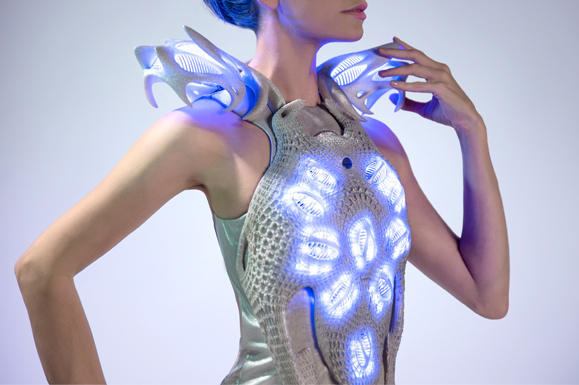It is natural to think that technology goes hand in hand with innovation. But has innovation been watered down to a form of refinement, or are we still pushing the boundaries? Computers used to be the size of a football field and now we carry them around in our pocket. Television went from white noise to an endless supply of content we can stream and store as we choose. Everything is getting better, smaller, more flexible, but are we just flogging the same horse?

The evolution of an idea, and the refinement of its delivery, has a lot to do with how users perceive and consume change. We as a species, are not always quick to jump to what’s new, we are led by the pioneers or in some cases send in the canary to test the waters first. Once its’ deemed safe, once we understand it, once it looks cool – then we desire it – then it’s just a matter of improvement.
Don’t get me wrong, I am not in any way demeaning the modern comforts that I and most of the population have come to live by. But technology must be palatable, or the average user would be left in the dark, and at the other end – the technology benched, development halted. Refinement is the fuel for innovation, we adapt faster to ‘newer versions’ because we are already familiar with the idea. Pioneers, inventors and visionaries all start with an idea, the rest of us just need to be sold on it. Edison is a perfect example, according to Stanford Law School professor Mark A. Lemley:
Thomas Edison “did not ‘invent’ the light bulb in any meaningful sense”, but what he did do well “was commercialise the invention”.
The difference with younger generations is that they buy into the ideas a whole lot faster. They have grown up surrounded by these technologies and not just that, a very sophisticated marketing strategy. The new gens’ life experience is so culturally entrenched in the language of technology, that the rate of their consumption can be correlated to the endless supply of slightly evolved smart phones. In other words, ‘instant gratification’ is met with small changes as a means of uninterrupted engagement. It is a wonder that there is little time left for any true innovation, since the world won’t slow down to let it happen. The impact of this speed to market is perhaps why Swarovski, who had partnered with Qualcomm and Google, delayed the 2017 launch of their anticipated Android wear for women. In a statement given to Wareable.com, Robert Buchbauer of Swarovski announced the delay saying that:
“Swarovski is simply not ready yet. We cannot yet make any statement regarding the timing of the launch” “The cooperation with and technology provided by all partners have been outstanding. The postponement was purely driven by Swarovski’s strive for excellence in execution”.
There are technology companies out there who have made significant headway with innovations to wearable tech. But the ones that have been successful to market, are those that have drawn on similar collaborations with the fashion credible. Urban fashion brand ‘Public School’ has teamed up with Fitbit Alta HR to create fitness trackers with a minimalist edge. The Fossil Group teamed up with Kate Spade to launch a hybrid Smart watch in 2016 and Skagen Connected collaborated with Michael Kors on a similar launch. Even Apple, a tech brand with enough cache of its own, sees the importance of cross promotion, having teamed up with Hermes for their latest generation of Apple Watch.

But has it revolutionised our lifestyle? Has it replaced the need for the smartphone? The answer in short is, no. This is probably more an example of enhancement and ‘desirable’ marketing. In line with that thought, the next evolution of accessory you can expect will be the ‘smart-ring’. In Mulberry Publications August 2017 issue of Jewellery Focus, they cover the rise of wearable technology. From the Helios ring, which tracks your sun exposure and Vitamin-D levels to the Mangos “Panic” ring a new level of safety device and the Ringley, which gives guided meditations alongside your daily notifications.
The public’s embracement of the smart-accessory is one thing, but the ‘Smart-Garment’ could be the real step forward in wearable technology. Once these garments hit stores on a mainstream level and the technology has integrated more seamlessly with design, maybe then we could start to see some real changes to our quality of life. According to Digital Trends.com the signs are promising, the Synapse Dress incorporates Intel’s Edison Chip to allow brainwaves to control built in lighting and cameras, but it is still too Avant-garde for real users. However, health tracking garments like the Exmobaby that allow parents to monitor things like temperature and heartrates during their infant’s sleep could be in demand now.

Given the current boom in fitness wear and the existing applications around health, this is more likely the area where we will see straight to market examples of wearable tech. Brands like Under Armour, have brought out the Armour Gemini 3 RE smart shoe which uses Bluetooth connectivity to track and guide your workouts and Myontec have launched Mbody connected shorts for athletes. In an exciting move Levi’s will launch in 2017 the Commuter Trucker Jacket, which allows users to interact with maps, calls and music on the go. Whilst still aimed at cyclists, its wearability could be the catalyst to mainstream usage of smart-garments.

Leaders of fashion and technology certainly think its heading this way. For the first time WT or Wearable Technologies, an International Forum will be heading down under to discuss the future of Wearable tech at Sydney’s International Convention Centre across December 7th and 8th in 2017.
Tell me, do you think refinement has stunted new technology?







